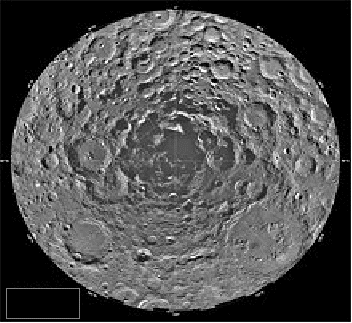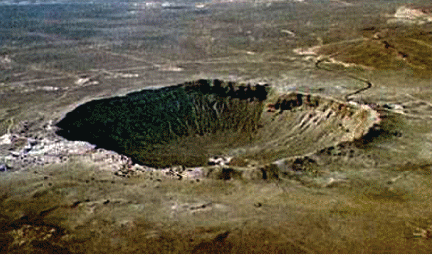The surface of the moon is littered with craters, most clearly shown in this image of the Moon's south pole.

The craters were formed when asteroids have hit the moon. In fact, every body in the solar system has been hit by craters, but those on bodies with atmosphere/oceans will have been weathered, maybe down to nothing. The moon has no atmosphere or ocean, so has no weathering processes and the impact craters survive forever, or until obliterated by another impact.
On the Earth, despite weathering, some – the largest - craters are still visible. This most famous perhaps, is the Grand Canyon in the USA.

At first, scientists thought impact craters wer made by volcanoes. A crater in Arizona, USA, is named after Daniel Barringer, who noticed that there are iron fragments scattered around the rim. Knowing that many asteroids contained a lot of iron, he thought that it could have been created by an asteroid impact. Further investigation produced quartz particles, only produced by huge pressures and temperatures, and that the rocks surrounding the crater were in reverse order to the layers of rock in the surrounding desert.
An asteroid impact may have been responsible for the extinction of the dinosaurs. There is considerable evidence for a very large impact at about the same time that extinction occurred. Such an impact would have thrown a lot of dust into the atmosphere, lowering the temperature and causing widespread loss of vegetation. This would have caused disruption of the food chain. Many species would have became extinct.
